Exploring the scientific theory about human origin
Unlike other animals, people have a high level of thinking. This has made them to reflect on their origin as well as to ask questions about how living and non-living things came to existence. This has made them to come up with answers to this nagging question from religious, traditional and scientific points of view. Scientists have explained this through a theory.
Activity 1: Work in groups
- Brainstorm on the meaning of the term ‘theory’.
- Using digital, print or other resources, research on the scientific theory of human origin.
- Discuss how the scientific theory is used to explain the origin of human beings.
- Write the points in your exercise books.
- Share your findings with your group members.
Activity 2: Work in pairs
- Read the following passage on human origin according to the scientific theory and answer the questions that follow.
The scientific theory is also known as the theory of Charles Darwin evolution. It has been used to explain the origin of human beings. This theory was developed by an English scientist called Charles Darwin in the 19th Century. According to the theory, humans and other living things, developed over millions of years from simple states to their present complex states. Humans evolved and developed from their primitive ape-like ancestors (Pithecus) to the modern people (Homo) they are today. The theory, holds that a new species is better and more adapted to their environment than those they have evolved from. - Who was the founder of the scientific theory of human origin?
- How does the scientific theory explain the origin of human beings?
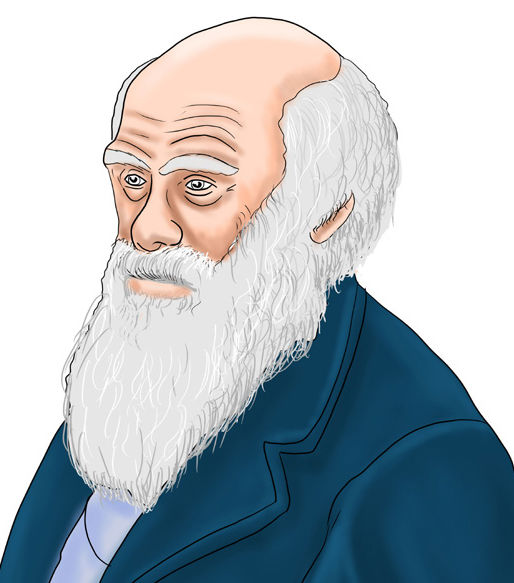
Key points
- According to the theory of evolution, human beings are a product of a gradual process of change.
- The change begins in the simple states or life forms and results in the new species which is complex, better and more adapted to their environment than its predecessor.
- The theory of evolution states that human beings belong to the primate group of animals.
- As primates, humans were in a simple state. The earlier humans had embarked on a long journey in the evolutionary process.
- Scientists agree that human beings first emerged in Africa before they spread to other parts of the world. This has made Africa to be referred to as the cradle of human beings.
Activity 3: Work in groups
- Get a manila paper or any other suitable material.
- Draw a chart on the different stages of human evolution.
- Display your chart to your group members.
Importance of fossil records of human evolution in Africa
Fossils are preserved remains or traces of any once living thing. Fossils are collected and preserved before being kept in museums. Once kept, the fossil becomes a fossil record.
- Using digital or print resources, research on the importance of fossil records of human evolution in Africa.
- Discuss the importance of fossil records of human evolution in Africa from your research.
- Write the findings and share with your friend.
Activity 5: Work in groups
- Read the text below on the importance of fossil records.
Fossil records of human evolution in Africa are important in the following ways:- They enable us to identify and name different species of early human being.
- The records enable scientists to identify areas where the species lived.
- The records also help to come up with the probable dates when each species lived.
- They help us identify artefacts each species used to make their living comfortable.
- They provide us with information on the culture of each of the human species.
- They provide us with some of the challenges our early ancestors experienced and how they went about overcoming the same.
- The records are a source of revenue as tourists visit where the fossil records are kept to view for leisure and learning.
- They expose us to the environment in which our early ancestors lived, their lineages, tools they used and their economic and political developments.
- From the information on the scroll, discuss the importance of fossil records of human evolution in Africa.
- Find out other importance of fossil records of human evolution in Africa.
- Share your findings with your group.
- In your discussion with the resource person, get information about:
- The scientific theory of human origin.
- How fossil records have been preserved.
- The importance of preserving fossil records.
- Write down the points that have emerged during the discussion.
Key points
Fossil records are preserved in the following ways:
- Upon discovery, fossils are collected, cleaned and dated. This is followed by labelling, naming and preservation of the fossil to enable it last longer.
- Environmental conditions are controlled to prevent the fossils from attack by fungi, pests and other micro-organisms.
- Fossils are preserved through controlled drying or through freeze-drying.
- The fossils should also be cleaned from time to time.
- Utmost care should be taken during handling of fossils to avoid causing destruction to them.
Locating when and where pre-historic human remains were discovered in Africa
Scientists have discovered fossils of early human beings in various parts of Africa at different times.
Activity 7: Work in groups
- Using digital or print resources, identify the areas where fossils have been discovered in Africa.
- Name the species of human evolution which have been discovered in the areas you have identified.
- Share your work with your group members.
Activity 8: Work in groups
- Using digital or print resources, collect pictures of different fossils which have been discovered in Africa.
- Write the date when each of the fossils was found.
- Indicate the place where each of the fossils was located.
- Make a chart showing when and where pre-historic human remains were discovered in Africa.
- Display your charts at strategic places in class for others to see.
- Fill in the chart showing when and where pre-historic human remains were discovered in Africa.
Pre-historic human remain | When they were discovered | Place discovered |
Kenyapithecus | ||
Australopithecus (Zinjanthropus or Southern ape) | Taung- Botswana | |
Homo habilis (handy man) | 1964 | |
Homo erectus (Upright man) | Morocco | |
Homo sapiens | 1921 | |
Homo sapien sapiens | Herto-Ethiopia |
- Locate the places where each fossil was first discovered using an atlas.
- Share your work with your friend in class.
- Study the map of Africa showing areas where fossils have been discovered.
- Write the names of the places marked A, B, C, D, E, and F on the map.

- A –
- B –
- C –
- D –
- E –
- F –
- Share your findings with your group members.
Key points
The following table summarises where and when the pre-historic remains were first discovered in Africa.
Pre-historic human remain | When they were first discovered | Place first discovered |
Kenyapithecus (Ramapithecus) | 1961 | Fort Ternan in Kericho County-Kenya. |
Australopithecus (Zinjanthropus or Southern ape) | 1924 | Taung in Botswana. |
Homo habilis (handy man or man with ability) | 1964 | Olduvai Gorge in Tanzania. |
Homo erectus (Upright man) | 1974 | Hadar in Ethiopia. |
Homo sapiens | 1921 | Northern Rhodesia now called Zambia. |
Homo sapiens sapiens | 1997 | Herto Bouri in Ethiopia. |
Changes that took place in humans as a result of evolution
- Carry out a library research on changes which took place in humans as a result of evolution.
- Discuss the changes you have researched about.
- Write down short notes.
- Complete the following table on the changes that took place in humans as a result of evolution.
Species | Changes |
 |
|
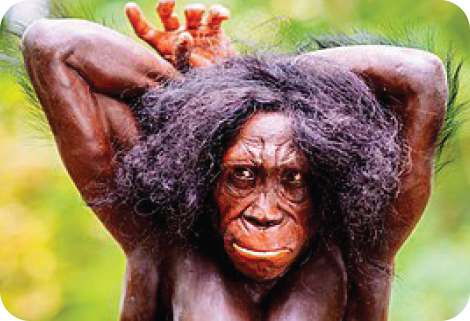 |
|
 |
|
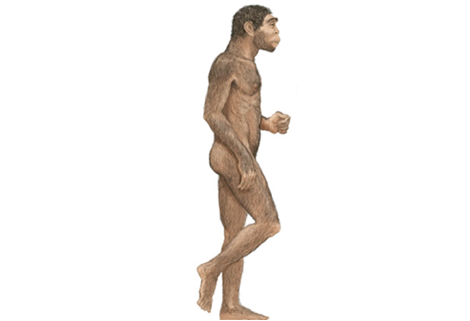 |
|
 |
|
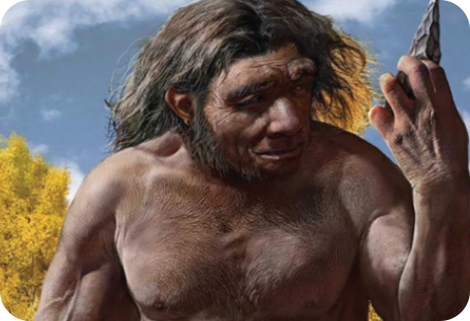 |
|
- Display your chart to your friends.
Activity 13: Work in groups
- Get a manila paper or any other suitable material.
- Draw an evolutionary tree showing the stages of human evolution.
- Hang your drawings in class for others to see and appreciate your effort.
Key points
- Kenyapithecus (Ramapithecus)
Remains were discovered at Fort Ternan, Kericho County in 1961. Lived around 20–14 million years ago. - Australopithecus (Zinjanthropus or Southern Ape)
Remains were first discovered at Taung, North Africa in 1924. Later, similar remains were discovered in Olduvai Gorge,Tanzania in 1975. Lived between 1.8 and 4 million years ago. - Homo habilis (Handy man or man with ability)
Remains were first discovered at Olduvai Gorge, in 1964. It is believed to have lived between 1.2–2.5 million years ago. - Homo erectus (Upright man)
Remains were first discovered in 1974 in the Afar depression in northern Ethiopia. It lived between one million to 500,000 years ago. - Homo sapiens (Thinking or intelligent human being)
This was the first closest species to modern people and was quite intelligent. Remains were first discovered at Kabwe and Kafue Valley in Zambia in 1921. It lived between 600 and 100 thousand years ago. - Homo sapiens sapiens
Homo sapien sapiens are believed to have first evolved in Africa around 10,000 years ago before they spread to other parts of the world.
Applying knowledge of human origin to develop a sense of common humanity and interdependence of humans
Activity 14: Work on your own
- Write an essay on how, through the evolution theory, we can demonstrate a sense of common humanity and interdependence among members of the human race.
- Read the essay to your friends in class.
Activity 15: Work as a class
- Using a digital device, watch an animated video of stages of human evolution.
- Where there is no network or digital devices, your teacher will download the video and show it to you.
- Discuss what you have learnt from the video you have watched.
- Identify an activity in your school or community where you can use knowledge on human origin to develop a sense of common humanity and interdependence of humans.
- Discuss how you can use your knowledge on human origin to develop a sense of common humanity and interdependence of humans.
- Develop a plan of how you will carry out the activity.
- Carry out the activity.
- Write a report on the activity you have carried out.
- Keep your report in your portfolio.
Key points
We can apply the knowledge on human origin to develop a sense of common humanity and interdependence by:
- participating in joint games and sports,
- helping the needy,
- participating in environmental conservation,
- living together in a multi-cultural and racial society,
- engaging in commercial activities,
- enrolling in multi-racial and ethnic learning institutions.
Recognising Africa as the cradle of humanity
Activity 17: Work as a class
Debate
- Form two teams and debate on the motion, ‘Africa is the cradle of humanity’.
- Discuss the points raised by each of the two sides in class.
- Share your experiences with your friends.
Activity 18: Work as a class
- Compose songs recognising Africa as the cradle of humanity.
- Rehearse the songs.
- Sing the songs in class.
- Make posters that recognise Africa as the cradle of humankind.
- Write messages on the posters depicting Africa as the cradle of mankind.
- Display your posters in class.
- Carry out a gallery walk and observe the displayed posters.
Activity 19: Work in groups
- Study the following pictures.
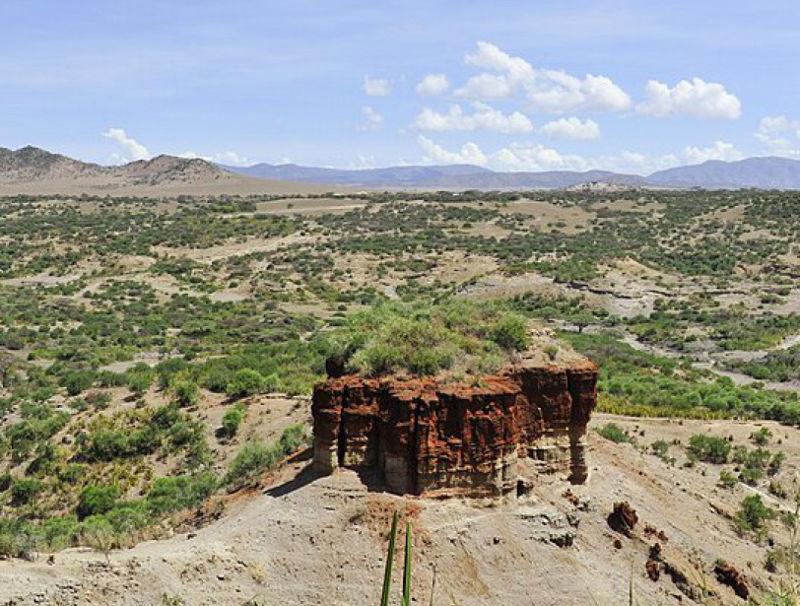

- Name the countries in Africa where the above pre-historic sites are found.
- Name the species of early humans discovered in the above pre-historic sites.
Summary
Activity 20: Take home
- Engage your parent or guardian in a discussion on how people came into being.
- Write the points in your exercise books.
- Share the points with members of your class.
Assessment Exercise
- Explain the contribution of the scientific theory in understanding of the origin of human beings.
- How have fossil records contributed to the understanding of human evolution in Africa?
- Illustrate the stages in human evolution from the earliest human to modern human beings.
- Describe the differences between species of human evolution.
- Draw a table with three columns and indicate the species, date and place where pre-historic human remains were discovered in Africa.
- Draw a map of Africa and locate areas where the remains of species of early human beings have been discovered by scientists.
- Assess the changes which have taken place in human beings as a result of evolution.
- How did the invention of fire affect the lives of early human beings?
- Analyse the effect of the adaption of the upright posture to the life of early humans.
- Why should we accept the scientific theory on human origin as being a good explanation on how human beings came into being?
